National Summary
In November 2024, Australia’s varied rainfall and temperature patterns significantly influenced biomass growth, underscoring the country’s regional contrasts in feedbase conditions. Below-average rainfall persisted in Tasmania, western and eastern Victoria, New South Wales, Queensland, southwestern Western Australia, and parts of South Australia and the Northern Territory. While deficiencies intensified along Western Australia’s southern coast, localized rainfall in southeastern South Australia and parts of Victoria provided some relief.
Above-average temperatures in many regions exacerbated the effects of limited rainfall, reducing soil moisture availability and hindering vegetation recovery. Despite these challenges, rainfall in eastern and southwestern regions supported moderate improvements in biomass growth, while central and northern areas continued to experience limited vegetation activity. These regional differences highlight the interplay between rainfall, temperature, and biomass production, as illustrated by the latest feedbase maps.

Imagery and analysis provided by CiboLabs
Regional Trends in Biomass Growth
November highlighted stark regional contrasts in feedbase conditions:
- Eastern Australia: Localized rainfall in Queensland and New South Wales led to moderate increases in biomass. Many areas surpassed 750 kg/ha, with some transitioning into the 1000–1250 kg/ha range, enhancing forage availability and supporting grazing activities.
- Southwestern Western Australia: Rainfall-driven improvements resulted in localized vegetation recovery, with some areas reaching the 1000–1500 kg/ha range. However, drying trends began to emerge in certain zones, reflecting the variability of seasonal rainfall impacts.
- Central and Northern Australia: Persistent arid conditions dominated these regions, with biomass levels largely below 500 kg/ha in the centre and under 250 kg/ha in the north. Limited rainfall and high temperatures hindered vegetation recovery, leaving extensive bare ground across these areas.
- Southeastern Australia: Above-average rainfall in Victoria and parts of New South Wales maintained dense ground cover and moderate biomass levels, though northeast Tasmania and the Bass Strait Islands struggled with below-average vegetation growth.
Decile Rankings and Seasonal Comparisons
The TSDM Seasonal Rank maps, comparing November 2024 conditions to the average of the past eight years, reveal subtle but important trends:
- Southeastern Australia: Slight improvements in vegetation were noted in Victoria and southern New South Wales, with more areas transitioning into higher deciles (70–90) due to recent rainfall.
- Central Australia: Extensive areas remained in the lowest deciles (<10), reflecting persistent arid conditions and limited recovery compared to historical averages.
- Northern Australia: Vegetation remained stable and consistent with the eight-year average, highlighting the lack of significant shifts.
- Southwestern Western Australia: Vegetation productivity declined in some areas, shifting from mid-range deciles (30–50) to lower deciles (<20), driven by drying conditions.
These decile trends underscore the ongoing challenges in central and southwestern regions, contrasting with moderate gains in southeastern Australia.
Active Plant Growth: Fractional Cover Insights
Fractional cover data, which tracks active photosynthesis and plant growth, provided a detailed view of vegetation health across regions:
- Eastern Australia: Improved photosynthesis and vegetation growth were evident in New South Wales, Victoria, and parts of Queensland, aligning with localized rainfall and enhanced biomass.
- Southwestern Western Australia: Slight increases in green cover along coastal areas reflected steady vegetation activity following sporadic rainfall.
- Central Australia: Non-green vegetation and limited photosynthesis persisted due to ongoing arid conditions.
These patterns illustrate the variability of vegetation responses, with eastern and southwestern regions benefiting from recent rainfall, while central areas continue to lag.
Green Standing Dry Matter (GSDM): Vegetation Recovery Disparities
GSDM maps highlighted the uneven recovery of green biomass:
- Southeastern Australia: Biomass levels ranged between 750 and 1500 kg/ha, with notable gains in southeastern Queensland and southern cropping zones, supported by seasonal rains.
- Southwestern Western Australia: Localized gains in green biomass (250–500 kg/ha) indicated slow but steady recovery.
- Central and Northern Australia: Biomass levels remained predominantly below 250 kg/ha, reflecting ongoing challenges in vegetation recovery.
- Tasmania and Southeastern New South Wales: Moderate biomass levels (500–1000 kg/ha) persisted, although these regions lagged behind southern cropping zones in recovery.
Dead Standing Dry Matter (DSDM): Variability Across Regions
DSDM levels showed significant changes across Australia:
- Northern Australia: Central Queensland experienced a marked decline in DSDM, dropping from 750–2000 kg/ha to 250–500 kg/ha, suggesting a transition to green biomass following rainfall.
- Southern States: Sparse dead biomass (<750 kg/ha) persisted across South Australia, Victoria, and Tasmania.
- Central Australia: Dead biomass levels remained consistently low (<250 kg/ha), reflecting arid conditions.
- Southwestern Western Australia: Some areas recorded increased dead biomass (500–1000 kg/ha) due to the accumulation of plant material after earlier dry conditions.
Ground Cover Contrasts
Ground cover data provided further insights into regional variability:
- Central and Western Australia: Bare ground expanded significantly, exceeding 50% in many areas and reaching >70% in some, reflecting severe dry conditions and limited recovery.
- Northern Australia: Ground cover remained relatively stable, with localized increases in bare ground (20–30% to 30–40%).
- Southeastern Australia: Dense vegetation cover persisted in New South Wales and Victoria, with most areas maintaining less than 20% bare ground, supported by favorable rainfall.
- Southwestern Western Australia: Bare ground increased in some areas (10–20% to 30–40%) as drying conditions set in following earlier growth.
These maps highlight the stark contrasts between dense ground cover in the southeast and bare ground expansion in arid central and western regions.
The feedbase maps for November 2024 vividly illustrate the variability in Australia’s climatic and vegetation conditions. Eastern and southeastern regions benefited from localized rainfall, supporting biomass growth and maintaining ground cover. In contrast, central and northern areas remained under persistent stress, with low biomass levels, limited photosynthesis, and extensive bare ground dominating the landscape. Southwestern Western Australia showed mixed results, with some localized recovery offset by drying trends in certain areas.
For more localised information including regional level overviews, users are encouraged to explore the Cibo Labs Regional Comparison. This tool provides regional data that may show the impact of localised weather or fire events. A further level of detail for individual properties is available for users who have created an Australian Feedbase Monitor account, which can be accessed both through the MyMLA portal or through the Cibo Labs website. These tools enable land managers to make data-informed decisions tailored to their unique feedbase conditions and needs.
The Cibo Labs National Comparison can be used to freely access these layers (https://www.cibolabs.com.au/products/national-comparsion/) to view the most recent images from a national, state or catchment level.
This tool can complement the Australian Feedbase Monitor which can also be created within the Cibo Labs Web Site www.cibolabs.com.au

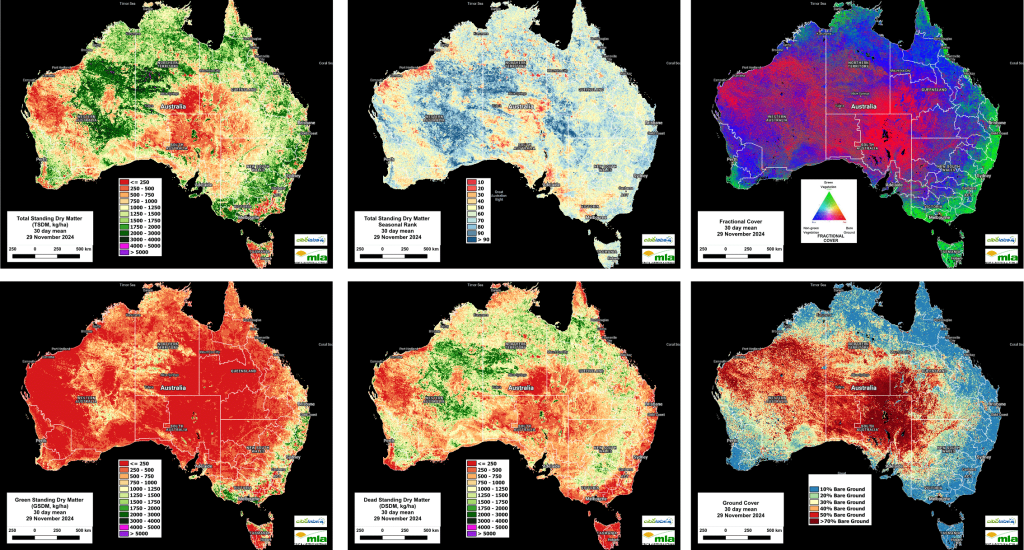
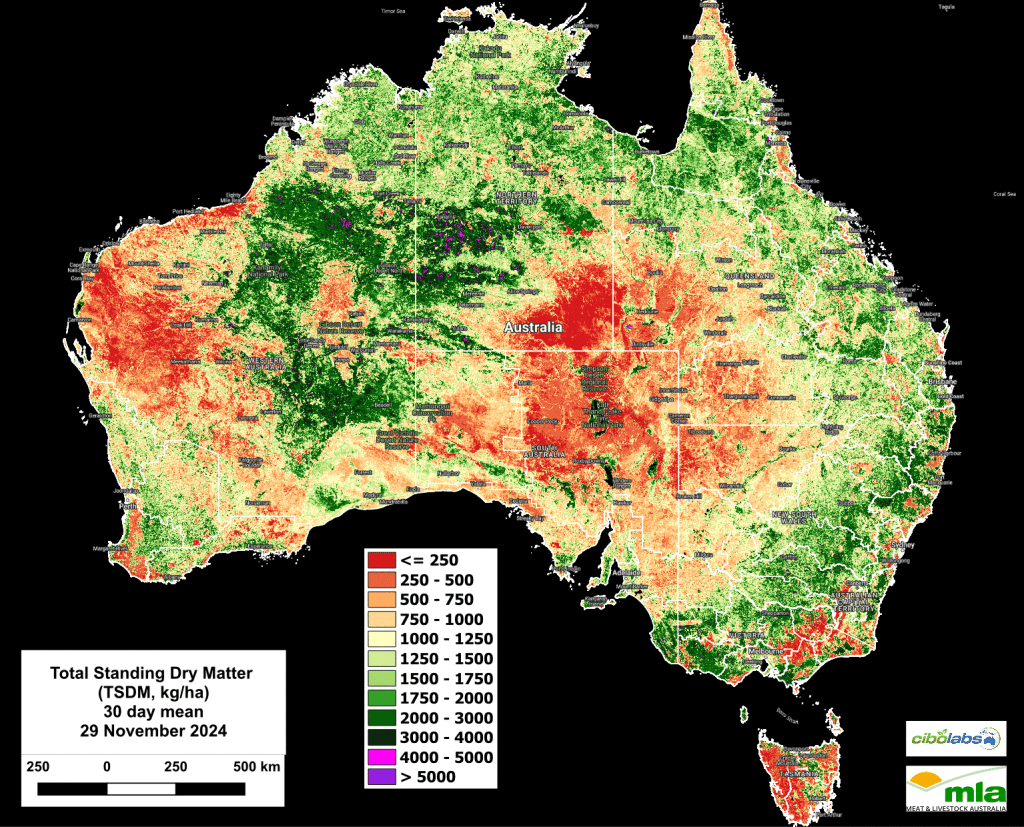
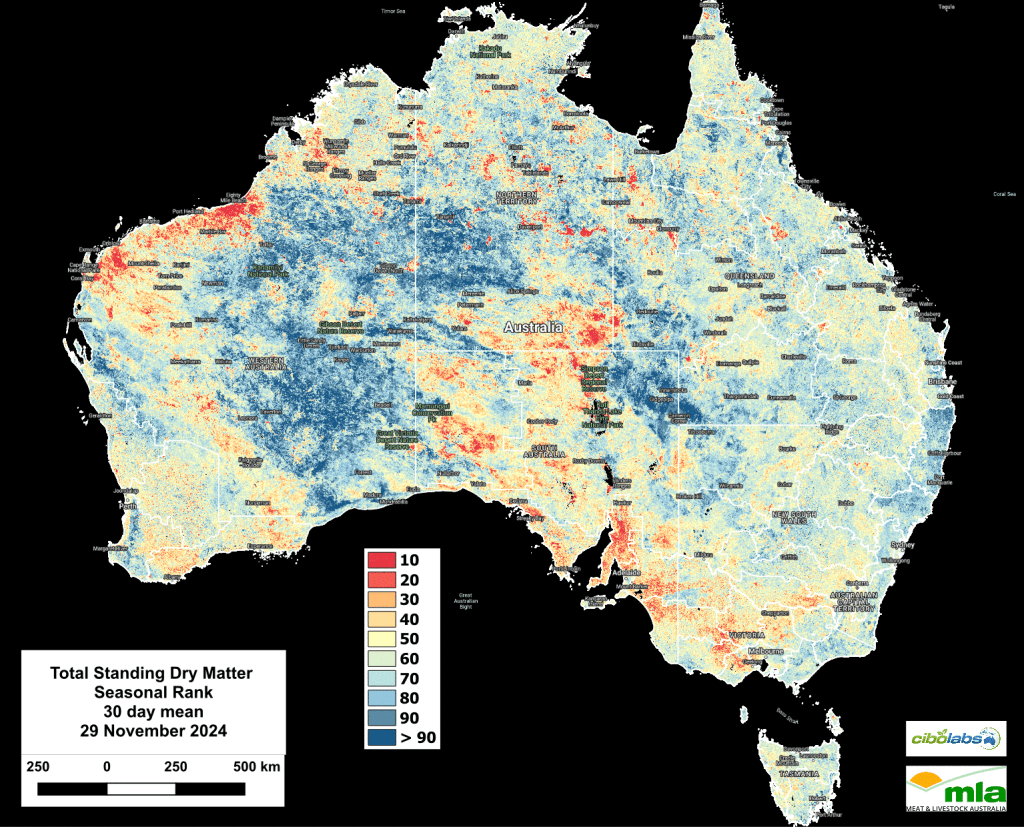

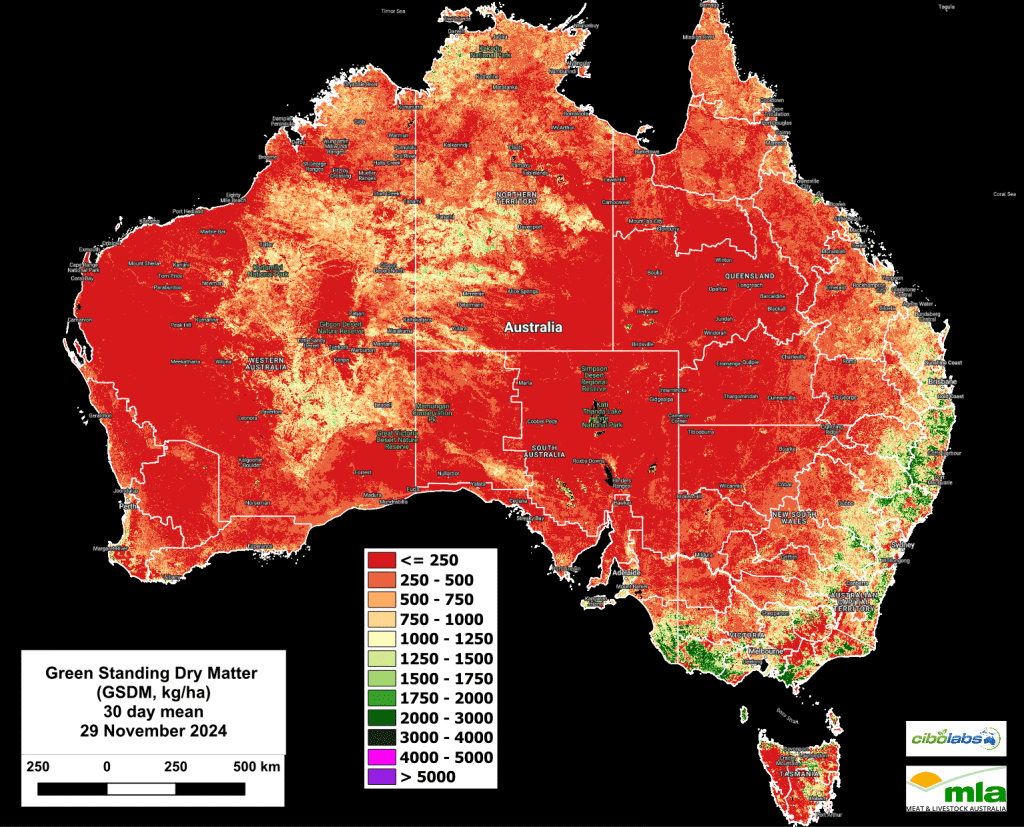
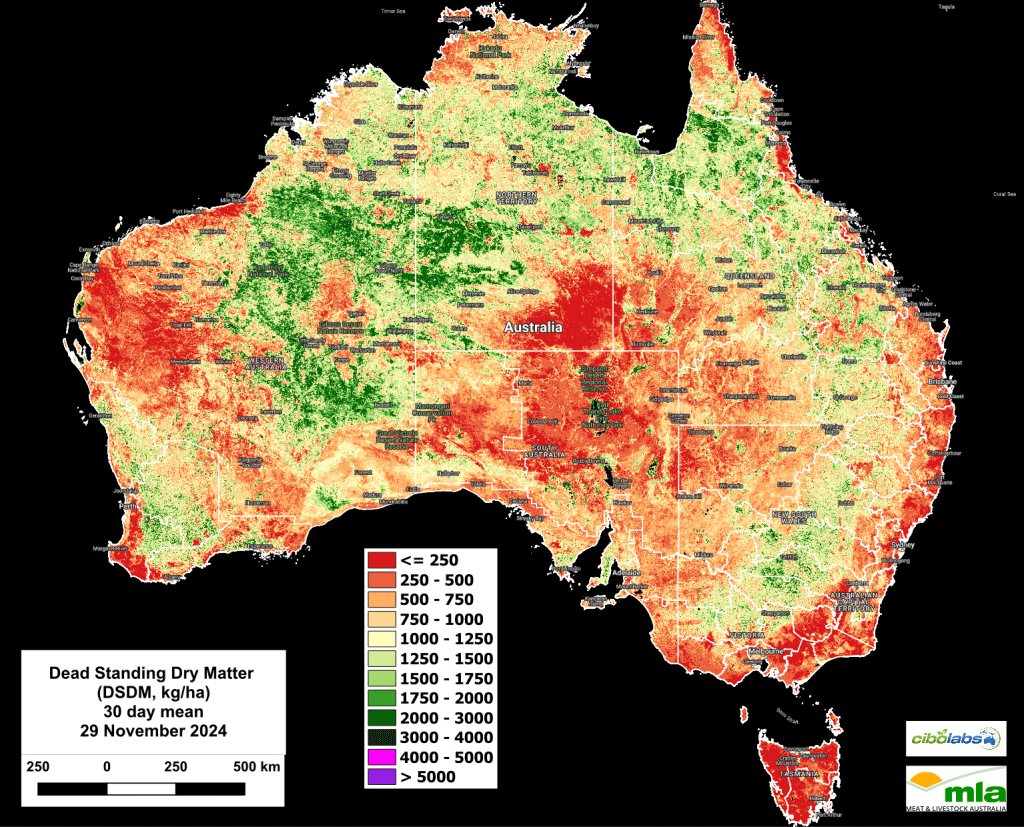
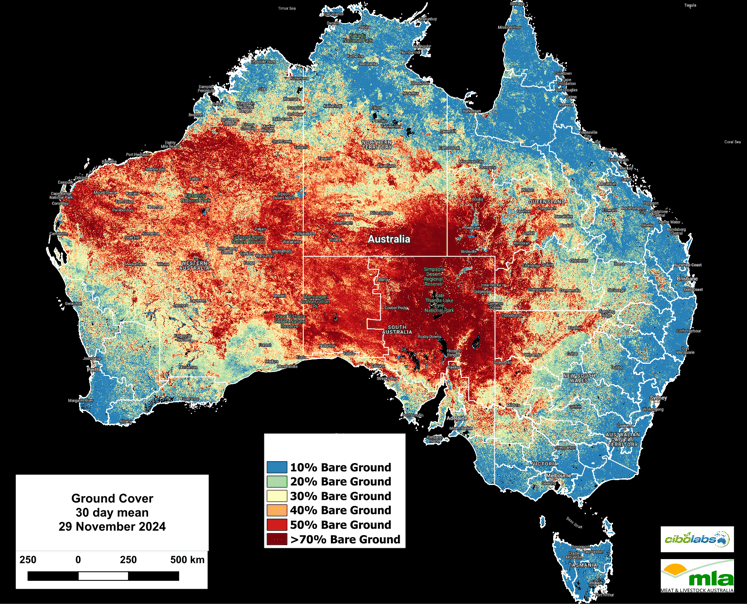
HAVE YOUR SAY